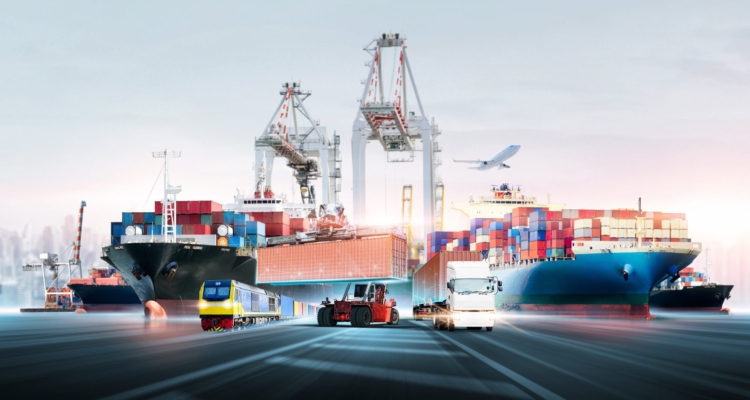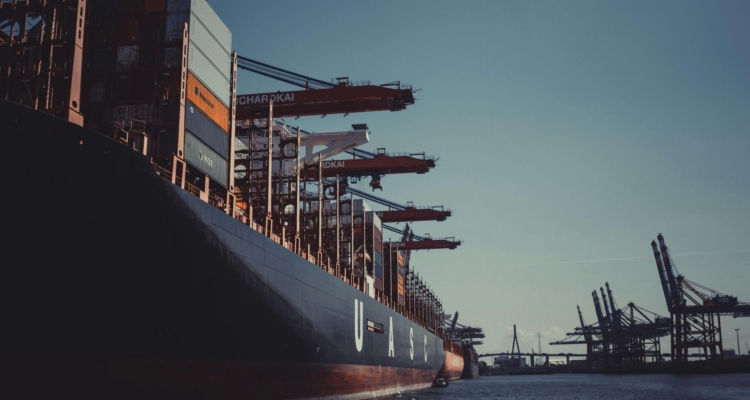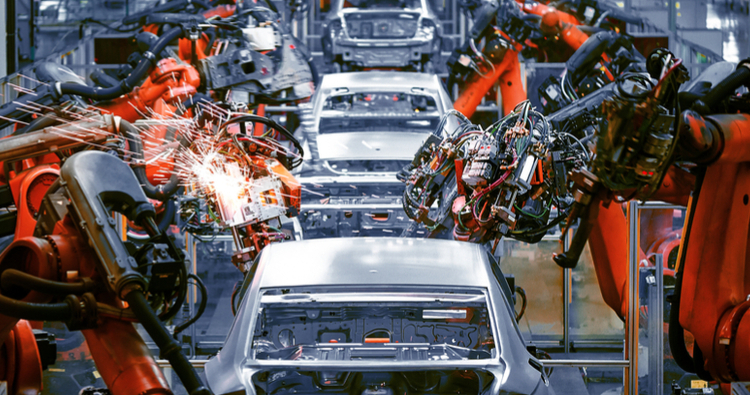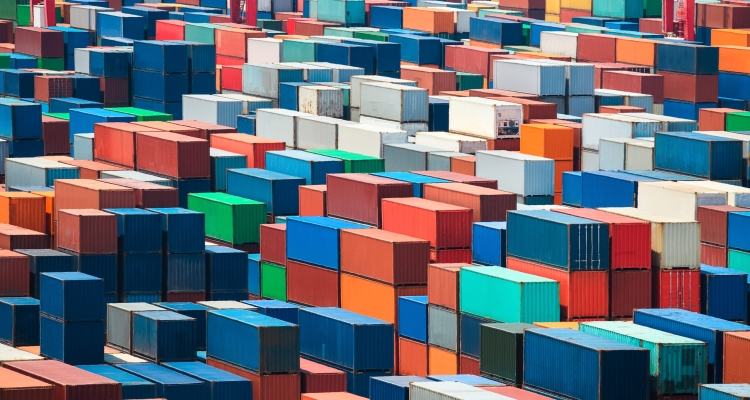Biden administration pledges $580 million to strengthen U.S. power
The U.S. Department of Transportation's Maritime Administration (MARAD) announced an investment of nearly $580 million to enhance port infrastructure across the United States. Funded by the bipartisan Infrastructure Act, the initiative will support 31 improvement projects across 15 states and one U.S. territory aimed at increasing the efficiency and capabilities of the nation’s maritime transportation system. Transportation Secretary Pete Buttigieg emphasized the importance of this investment, saying, "America's ports are critical to our supply chain. These projects from Long Beach to Monroe will expand capacity, increase efficiency, and provide Help reduce household costs.” The funding is allocated through MARAD’s Port Infrastructure Development Program (PIDP), a $2.25 billion program launched under the bipartisan Infrastructure Act. PIDP provides comprehensive support for planning, capital investment and project management to modernize urban and rural ports. Maritime Administrator Ann Phillips highlighted the impact of these upgrades, noting that U.S. waterways handle 2.3 billion short tons of cargo annually. She described the benefits of port improvements…
Automated logistics improves customs efficiency
Descartes Systems Group, a global leader in logistics technology, announced that Michigan-based Automated Logistics Systems has adopted its Foreign Trade Zone (FTZ) solution to streamline customs clearance processes and reduce import costs for U.S. customers by deferring the payment of duties. “Our warehouse in Jackson, Michigan already operates as a free trade zone, and we want to simplify compliance and reduce costs for our customers,” said Paul McDonald, strategic advisor at Automated Logistics Systems. “Descartes’ solution maximizes the cost-saving potential of free trade zones through automation while ensuring compliance with U.S. Customs and Border Protection (CBP) regulations. By digitizing customs processes and increasing shipment visibility, we enhance our ability to target shipments to Free trade zone services for goods in the domestic market.” Free trade zones are federally authorized secure areas where domestic and foreign goods are treated as trade outside the United States for customs purposes. Descartes' FTZ solution automates critical processes such as customs filing, freight management and…
China to launch first marine biofuel export quota in 2025
China plans to issue its first export quotas for marine bunker fuel blended with biodiesel, aiming to support domestic biofuel producers affected by EU anti-dumping duties. Industry sources and consultancy JLC reported that the government was considering a quota of 500,000 tons, which could be allocated to state oil companies PetroChina, Sinopec and CNOOC. The mixed fuel, called B24, is composed of 24% biodiesel and 76% low-sulfur fuel oil, which is different from the low-sulfur fuel oil conventionally exported from China. The quotas are expected to be rolled out in late 2024 or early 2025. The move addresses challenges faced by Chinese biodiesel refiners, whose exports fell sharply after the EU imposed steep tariffs in August. State-owned refineries could use carbon credit incentives to promote the adoption of low-carbon marine fuels for ships on routes between China and the EU. The program also supports the Chinese port of Zhoushan in promoting biofuel sales, in line with global trends in major…
CargoAi and Aircargonet join forces to transform
CargoAi and Aircargonet International GmbH have announced a strategic alliance pledging to reinvent air cargo logistics through enhanced digital distribution. The partnership will provide Aircargonet’s airlines, including Amerijet International, Middle East Airlines, Uzbekistan Airways and Royal Jordanian Airlines, with seamless access to real-time prices and capacity bookings. Also read: CargoAi launches groundbreaking air freight loading board for airlines and freight forwarders By integrating with CargoAi's advanced digital platform, Aircargonet streamlines the booking process and provides users with a streamlined, data-driven experience. A key innovation of the partnership is the delivery of rates and capacity in real-time, allowing freight forwarders to make informed decisions and optimize operations with greater speed and accuracy. “This partnership is a key step in our digital strategy,” said Philipp Gladigau, Business Development Manager at Aircargonet International. “By connecting our cargo capabilities to CargoAi’s platform, we enhance our ability to meet market demands quickly and efficiently, strengthening our Commitment to top-notch service delivery.” Matthieu Petot, CEO of…
Why supply chain partners are not resetting rebates past due
Rebates are critical to improving financial outcomes across the supply chain, such as increased profits, increased sales, and better service to end customers. That’s why trading partners must think creatively about how to make the most of rebates to achieve their business goals. Also read: Why many new industries are embracing kickbacks Employing more sophisticated and flexible rebate strategies will open up many avenues for growth. While these advanced strategies are inevitably more complex than traditional incentives such as discounts, there are powerful digital tools that can handle this complexity and facilitate collaboration among trading partners. With these tools, partners can take a more innovative and strategic approach to rebates, a shift that has the potential to strengthen the relationship and significantly improve business outcomes for both parties. In other words, it’s time to reset your rebates. The traditional one-size-fits-all approach to rebate management prevents manufacturers, distributors and other partners from maximizing the value of their relationships and driving the…
Five trends that will reshape shipping in 2025
As 2025 approaches, the shipping industry will usher in a wave of change influenced by political, environmental and technological forces. These shifts will not only impact businesses, but also global supply chains and consumer markets. Also read: Shipping industry faces tough choices under new FuelEU maritime regulations Here are five key trends we predict will shape the shipping landscape in 2025… #1 The rise of America First means greater uncertainty The resurgence of America First policies promises to reshape the shipping and packaging industries in significant ways. The proposed tariffs of up to 20% on all imported goods and up to 60% on goods from China are aimed at boosting domestic production and reducing dependence on foreign suppliers. However, for businesses that rely on foreign suppliers, these tariffs will increase the complexity of cost management and logistics, as companies respond to these changes by importing in advance. The rush to comply with tariff deadlines can lead to bottlenecks at warehouses…
90% of supply chain professionals advocate cloud-driven
A new survey from Loftware highlights the huge need for stronger connectivity in global supply chains, with 90% of industry professionals highlighting the need for greater collaboration to increase efficiency, ensure compliance and reduce costs. The findings come as companies prioritize resilience, transparency and agility to respond to disruption and changing consumer expectations. The survey, which gathered insights from more than 400 professionals from 55 countries, revealed that 84% of respondents support the establishment of a collaborative ecosystem where supply chain partners share access, data and standards. Cloud technology is seen as key to enabling this transformation, with 74% of respondents believing it provides a flexible framework to simplify labeling and collaboration between trading partners. "Global supply chains are becoming increasingly complex, increasing the need for digital transformation. Companies are turning to cloud solutions to enhance interactions and ensure compliance across their networks," said Josh Roffman, executive vice president of marketing at Loftware. Compliance challenges remain a significant pain point.…
U.S. ports receive $580 million in infrastructure grants
To mark the third anniversary of the passage of the bipartisan infrastructure law, the U.S. Department of Transportation’s Maritime Administration (MARAD) announced nearly $580 million in Port Infrastructure Development Program (PIDP) grants. The grants will fund 31 projects in 15 states and one territory, promoting critical infrastructure upgrades at ports across the country. Cary Davis, president and CEO of the American Association of Port Authorities (AAPA), expressed gratitude for the support from congressional leaders on both sides of the aisle and the U.S. Department of Transportation. “The hard work begins now. AAPA Ports is committed to working with our federal government partners to quickly deploy funds, break ground and complete upgrades to strengthen our nation’s supply chains,” said Davis. Maritime Administrator Ann Phillips highlighted the broader impact of these upgrades, stating: “Modernizing America’s ports is critical to enhancing the intermodal networks that support our supply chains. 2.3 billion short tons of cargo are transported through U.S. waterways each year, This…
China-driven surge in U.S. imports puts pressure on major ports
According to the latest global shipping report from Descartes Systems Group, U.S. container imports surged in October 2024, reaching 2,494,635 TEU (20-foot equivalent units). This marked the fourth consecutive month that throughput exceeded 2.4 million TEU - a threshold that has historically put pressure on U.S. port logistics. The data for October increased by 8.1% year-on-year, a sharp increase of 20.5% from 2019 before the epidemic. Year to date, imports are up 13.1% from 2023 and 16.9% from 2019. These increased volumes highlight the strong performance of U.S. imports in 2024, especially compared with the modest 3.4% growth in 2019 observed in early 2023. However, the surge in imports has created logistical challenges. Transit delays increased at seven of the top 10 U.S. ports in October as facilities on the Eastern and Gulf Coast faced a three-day strike by the International Longshoremen's Association (ILA). "Import volumes have been high for four months and port operations are showing pressure as transit…
The logistics industry is cautiously optimistic under the economic situation
The BlueGrace Logistics Confidence Index® for the first quarter of 2025 reveals cautious optimism among logistics professionals as companies balance strategic growth with economic uncertainty. The data showed a slight boost from positive sentiment surrounding inventory and order volume forecasts, signaling a readiness to seize growth opportunities without ignoring market risks. When it comes to inventory management, while the apparent optimism has subsided slightly, the rise in neutral sentiment suggests that companies are adopting flexible, risk-aware strategies. This adaptability allows businesses to remain sensitive to market changes without overextending themselves. Likewise, order volume forecasts also show caution, with a more neutral outlook and tapering positive sentiment, underscoring a conservative stance on near-term growth. Adam White, vice president of marketing at BlueGrace Logistics, said: “Our latest Logistics Confidence Index shows customers moving forward with cautious optimism during uncertain times. Shippers are balancing confidence with caution to position themselves to capitalize on growth , while remaining flexible in changing market conditions.” Overall,…
Application of Artificial Intelligence (AI) in Warehousing Market Sizing
analyze Application of artificial intelligence in warehousing market Nester research shows that the market size will grow at a CAGR of 27.2% between 2025 and 2037, reaching approximately US$242.2 billion in 2037 Also read: Artificial Intelligence – How it is shaping and redefining logistics The integration of artificial intelligence and the Internet of Things leads the development of next-generation warehouse management solutions The integration of IoT and AI in warehousing is expected to improve operational efficiency through real-time data collection and analysis. Key market players continuously invest in research and development activities to launch innovative warehouse solutions. AI and IoT integrated solutions are expected to help track inventory and assets in real-time, thereby increasing visibility across the supply chain for informed decision-making. Traditional systems are often unable to manage large workloads and data speeds, impacting the overall productivity of the warehouse. For example, in July 2021, Sierra Wireless partnered with Microsoft Corporation to develop an asset tracking solution. Sierra Wireless's…
Panama Canal plans to double container traffic for $8
The Panama Canal Authority wants to double the container throughput of its iconic waterway, its head, Ricaurte Vasquez, said. Speaking at the International Maritime Conference in Houston, Vasquez detailed an $8 billion investment plan for the canal, which includes a robust water-saving strategy after a severe drought caused the diversion of ships traveling between the United States and Asia. Also read: Panama Canal makes $3.45 billion profit despite drought reducing shipping Authorities are encouraging shippers to consolidate cargo and reduce water use per vessel, especially container ships. Additionally, the canal plans to expand cargo transshipment capacity on the West Bank, facilitating the unloading and reloading of containers by rail, truck or ship. The expansion will increase the canal's annual container traffic to 5 million by 2045 from the current 8.3 million. The canal has prioritized container ships since a 2016 expansion added a third set of locks, but now bulk carriers have returned, with recent slot allocations reserving about 40%…
How to speed up e-commerce delivery
In today's fast-paced digital world, speed isn't just a luxury, it's a necessity. For e-commerce businesses, fast delivery can make or break the customer experience. As consumer expectations continue to rise, companies must ensure their products arrive quickly or they risk falling behind competitors who prioritize fast and efficient shipping. Also read: How e-commerce is driving new trends in global trade and logistics This article outlines proven strategies that can help your own organization streamline delivery processes, thereby increasing customer satisfaction (and reducing costs). First, it’s important to understand how important speed is to an ecommerce business’s bottom line. A paradigm shift in consumer expectations In today's e-commerce world, fast delivery has evolved from a convenience to an expectation. There was a time when delivery times of 2-5 days were considered standard, but those days are long gone. With the rise of competition and a culture of instant gratification, consumers increasingly demand comprehensive and faster service. 63% of online customers…
Strike fears drive import surge at U.S. ports
U.S. container imports are expected to increase through the end of the year as retailers prepare for possible East Coast and Gulf Coast port strikes and higher tariffs under President-elect Donald Trump. Uncertainty over labor negotiations and proposed tariffs is prompting retailers to speed up shipments and reroute cargo to West Coast ports to avoid disruptions, according to the National Retail Federation's latest Global Port Tracker report. In October, the International Longshoremen's Association (ILA) held a brief strike, eventually reaching a tentative agreement to extend the contract until January 15 and consider increasing wages. Jonathan Gold, NRF's vice president of supply chain and customs policy, warned that if negotiations reach an impasse, a prolonged strike could occur, triggering contingency measures by shippers. Ben Hackett, founder of Hackett Associates, added that the recent surge in imports was driven primarily by these preemptive actions rather than organic demand. Against this backdrop, President-elect Trump has proposed imposing tariffs of up to 20% on…
Large, low-visibility infrastructure projects underway
Surface railroad crossings (where roads and railroad tracks intersect at the same level) are the second leading cause of railroad-related deaths in the United States, with more than 2,000 accidents and approximately 200 fatalities each year. Also read: 9 cutting-edge technologies that are revolutionizing rail infrastructure Existing level crossing warning technology has remained essentially unchanged since the 1960s, and it is clear that more technology is needed. Current standards include flashing red lights, warning bells and gates that lower before a train approaches. Upgrading or eliminating level crossings can significantly reduce the risk of collisions between vehicles and trains. Intersections inherently present safety challenges, but grade crossings and improved technology can significantly reduce the likelihood of an accident. Communities across the country are reconfiguring these types of intersections. A $52 million, two-phase project in Pelham, Alabama, will build a bridge over two existing grade crossings near Lee Road. The project will also realign two county roads and widen and upgrade…
Hapag-Lloyd invests US$4 billion in 24 dual-fuel ships
German shipping giant Hapag-Lloyd has committed to investing US$4 billion to order 24 new dual-fuel container ships from China's Yangtze River Shipbuilding Group and New Era Shipbuilding Co., Ltd. The fleet upgrade is planned to be delivered from 2027 to 2029, which will increase the shipping capacity by 312,000 TEU. In terms of Yangzijiang Shipbuilding, it has 16,800 TEU ships, and New Era Shipbuilding has 9,200 TEU ships. Also read: Environmental groups push to decarbonize shipping to fight pollution The advanced vessels will be aligned with Hapag-Lloyd’s Strategy 2030 and feature dual-fuel engines capable of running on biomethane, which is expected to reduce CO2 emissions by up to 95%. Additionally, the ships are designed to be ammonia-ready, demonstrating the company’s commitment to sustainable shipping and carbon neutrality. CEO Rolf Habben Jansen noted: "A more efficient fleet will strengthen our competitive position and enable us to provide high-quality global services." With $3 billion in long-term financing, this fleet update and the…
Survey highlights logistics industry’s lack of preparedness
Global logistics solutions provider Trade Tech, Inc. has released the results of a recent survey revealing critical knowledge and preparedness gaps regarding the EU’s upcoming ICS2-ENS and EORI requirements. Despite widespread awareness of the regulations, less than half of survey respondents expressed readiness to comply with the ICS2-ENS compliance deadline of December 4, 2024. This delay in preparation creates significant risks for companies handling transport into and within the EU. Also read: Embracing ICS2-ENS: Leading the future of global trade with precision and insight Key insights from the survey include ICS2-ENS Awareness: Nearly 47% of respondents lacked awareness of ICS2-ENS requirements, highlighting a considerable knowledge gap. Compliance readiness: Only half of respondents are on track to meet the December 2024 compliance deadline. Regulatory timeline awareness: More than half (56.5%) are aware of compliance deadlines, while many remain unaware of timelines. Expected operational impact: While 58.8% of industry participants expect an impact from ICS2-ENS, 32.9% are unsure of the regulation’s impact.…
The role of artificial intelligence in streamlining operations and reducing costs
Artificial Intelligence and Traditional Automation Traditional automation involves rule-based systems for repetitive tasks without human intervention, done through tools such as scripts or data entry. While it is effective for simple tasks, it lacks adaptability and decision-making capabilities beyond set scenarios. In contrast, AI-driven automation uses artificial intelligence to learn from data over time, handling complex tasks such as pattern recognition and prediction. It can analyze large data sets, identify trends and make real-time adjustments, capabilities that traditional automation lacks. The main difference is flexibility and intelligence, as AI-driven automation can process unstructured data, evolve through machine learning, and provide insights, making it ideal for dynamic applications such as predictive maintenance and demand forecasting. Also read: The Impact of Automation and Artificial Intelligence on Supply Chain Efficiency: Changing the Logistics of the Future Integration of artificial intelligence and business systems Cross-departmental AI integration involves embedding AI tools into CRM systems to gain insights into customer behavior and into ERP systems…
Redwood decarbonization could generate $200 million annually…
Redwood's Fall 2024 Logistics Sustainability Report draws on insights from recent research by Gartner and the Boston Consulting Group (BCG) as well as Redwood's own logistics sustainability activities to highlight the growing impact of decarbonizing logistics. Companies are increasingly adopting logistics carbon accounting and management systems (LCAMS) to enhance their greenhouse gas (GHG) tracking, according to Gartner's Market Guide for Logistics Carbon Accounting and Management Solutions, in which Redwood is identified as a representative vendor. A recent study by the Scope 3 Peer Group revealed that 97% of companies believe digital solutions are critical to achieving their Scope 3 decarbonization targets. Also read: EPA allocates $3 billion to decarbonize U.S. ports using clean technology At the event in Redwood, UNVR senior director of transportation strategy Travis Vedral highlighted three key steps for the industry to achieve sustainability without making major technology investments: optimizing routes, leveraging efficient equipment and training employees. “An effective sustainability strategy starts with a team based on…
Resilience in the face of adversity: How recent turbulence has
It’s no secret that supply chains have been challenging in recent years. The COVID-19 pandemic restricted the supply of materials to nearly every manufacturing sector before conflicts in Ukraine and the Middle East further drove up costs or exacerbated scarcity. These also do not include extreme weather, strikes and maritime accidents that organizations must deal with. Also read: Global shipping faces turmoil: Chokepoint disruption threatens trade and supply chains Amid these waves of disruption, global supply chains have shown surprising strength. Prices have fallen from record highs, delivery times are normalizing, manufacturing capacity is growing and the economy appears to have avoided severe inflationary pressures. At first glance, such positive results may seem counterintuitive. However, a closer look reveals that supply chains have not been strengthened by recent challenges but rather by them. More precisely, business responses to adversity have given rise to stronger global supply chains. Technology investment boom Much of the increased resilience organizations gain comes from the…
Embracing ICS2-ENS: Leading the future of global trade
Seattle, Washington, November 4, 2024 – As President of Trade Tech, I’ve seen firsthand how regulatory advances like the European Union Import Control System 2 (ICS2-ENS) are reshaping global trade. ICS2-ENS is not just a new compliance requirement; This is a fundamental shift toward safer and more efficient supply chains. Also read: Logistics trade body urges action on new EU import rules ICS2-ENS aligns Europe, the world's largest trading market, with other major import markets such as the United States, Canada, Mexico and Japan, with the same regulatory processes and data configurations. The consistency of these international trade regulatory processes creates effective process and data standards for global as well as local importers and global traders. So the question now is: “How can importers and global traders take advantage of this regulated data flow?” Here's why ICS2-ENS is important, how strict data rules ensure accuracy and operational liquidity, and how Trade Tech can help you stay ahead of the curve.…
Driving Logistics Brand Consistency: Key Insights
Brand consistency is more than just your logo or slogan, it’s the sum total of all interactions your customers have with your company. In the logistics world, efficient service and reliability are crucial, and maintaining a consistent brand image can mean the difference between a one-time transaction and long-term customer loyalty. In this article, we’ll explore how logistics companies can drive brand consistency and achieve greater success in their marketing campaigns. Why brand consistency is important in logistics Brand consistency is the backbone of any successful marketing campaign, especially in the logistics sector. Strong, unified brand image: build trust: Customers and partners know what to expect when they work with your company. Consistent messaging and visuals create a sense of familiarity, which helps build confidence. Enhance credibility: A consistent brand image demonstrates your company’s professionalism and reliability. It shows potential customers that your company values quality, making them more inclined to trust your abilities. This credibility is especially important in…
How e-commerce drives new trends in global trade
The rise of e-commerce has fundamentally changed the way goods are bought and sold around the world. From small local businesses to large multinationals, online retail has opened up new markets and opportunities, driving major changes in global trade and logistics. As more consumers embrace the convenience of online shopping, businesses are adapting to meet the growing demand for fast, reliable and efficient delivery. This shift is not only reshaping trade routes but also driving innovation in logistics, supply chain management and sustainability, driven by factors such as online banking, digital payments and increased global internet penetration. Consegic Business Intelligence Analysis online banking The market size is expected to increase from US$16,819.81 million in 2023 to US$48,820.39 million in 2031, with a compound annual growth rate of 14.2% from 2024 to 2031. Also read: The rise of the sharing economy in e-commerce and logistics E-commerce platforms have made it easier than ever for businesses to expand domestically and abroad, leading…
Panama Canal net profit $3.45 billion
The Panama Canal posted a 9.5% profit increase in the fiscal year to September 2024, generating revenue of $3.45 billion, despite a severe drought that restricted ship traffic in the vital waterway. Also read: Panama Canal transit resumes, full normalization still to be resolved Weather challenges and shipping restrictions Bad weather has forced the canal authority to reduce the number of daily ship transits and impose draft restrictions through late 2023 and early 2024. The restrictions caused severe delays and forced some ships to reroute other routes, although they were lifted later this year. Strategic cuts of 5% in operating costs have helped offset the financial impact of the drought, allowing the canal to maintain profitability. Revenue also rose slightly by $18 million to $4.99 billion, Canal Vice President of Finance Victor Vial said. Focus on sustainability and resilience “Our financial strategy is complemented by environmental initiatives that ensure operational resilience,” canal chief Ricaurte Vásquez said in a statement. While…
Forecasting demand in supply chains: why it’s so important
Demand forecasting has become an important tool for supply chain and logistics professionals. In industries where unexpected delays, sudden market changes and fluctuations in demand are common, accurate forecasts enable companies to predict demand, optimize resources and minimize disruptions. Let’s explore why demand forecasting is so important, how it impacts every aspect of logistics, and the strategies companies can use to improve their forecasting capabilities. Why demand forecasting is important in supply chains The core of demand forecasting is to predict customer demand for a specific product or service within a specific period. By leveraging historical data, analytics, and sometimes artificial intelligence, businesses can accurately estimate the number of items needed to meet customer demand without over- or under-stocking. This insight is crucial for the following reasons: 1. Minimize stock-outs and excess inventoryOut-of-stock items can lead to dissatisfied customers, lost sales, and potential damage to brand reputation. On the other hand, excess inventory can lead to wasted resources, storage issues…
New climate risk score equips climate supply chains
Everstream Analytics, a leader in supply chain insights and risk analytics, launches the Climate Risk Score, a groundbreaking tool that quantifies the impact of climate on supply chains through 2100. This feature uses automated climate risk predictions and leverages applied meteorology and data from the Intergovernmental Panel on Climate Change (IPCC) to provide actionable insights into the potential vulnerability of supplier sites and facilities. Also read: Maritime shipping reduces sulfur content, but with it comes climate concerns Climate risk scores enable businesses to assess the projected impacts of climate indicators such as tropical cyclones, riverine flooding, sea level rise, extreme heat, fire weather, cold snaps, droughts and precipitation. Integrated into Everstream's Explore platform, the tool helps customers plan for business continuity by providing future risk projections for key time intervals (2040, 2050 and 2100) under multiple climate scenarios. Everstream Chief Meteorologist Jon Davis emphasized the importance of the new tool, saying: “With the Climate Risk Score, we provide businesses with…
North American ports invest in cold storage capture
The refrigerated freight industry has become the fastest growing industry at North American ports, driving new investment in cold storage facilities. Speaking at the American Association of Port Authorities annual meeting, industry leaders highlighted the surge in refrigerated cargo and the need to replace outdated infrastructure to accommodate this high-margin market. Also Read: Refrigerated Logistics Lands on Nasdaq As many cold storage facilities in North America age (more than half are over 40 years old), operators such as Cold Summit Development are taking the lead in replacing inefficient facilities with modern port warehouses. “Most existing cold storage facilities require upgrades to meet today’s design and cooling efficiency standards,” explains Eric Casey, executive vice president of Cold Summit. The Port of Wilmington, North Carolina, exemplifies this trend, with a new cold storage development designed to balance local cargo flows. Brian Clark, executive director of the North Carolina Ports, noted the port's strategy to support import and export needs, handling everything from…
Cold chain tracking and monitoring market valued at $24.1 billion
introduce As Market.us says, global Cold chain tracking and monitoring market Expected to achieve significant growth Will reach $24.1 billion by 2033,from $6.6 billion in 2023. This growth represents strong The compound annual growth rate is 15.5% during the forecast period from 2023 to 2032. This growth is driven by growing demand for perishable products and rising regulatory standards across industries. Also read: North American ports invest in refrigeration to capture growing refrigerated market The market covers a variety of technologies and components such as hardware systems including sensors and data loggers, as well as software solutions that provide real-time monitoring capabilities 2022, North America Lead the market and occupy the market 35.2% share and yields approx. US$2 billion In terms of income. The region’s dominance can be attributed to strong infrastructure, high consumer demand for safe, fresh products, and leading advancements in tracking technology. Cold chain tracking and monitoring involves complex systems that ensure the safety and quality of…
Navigating the logistics cybersecurity landscape:
Here we explore the logistics industry’s key cybersecurity challenges and solutions to ensure data protection, secure supply chains and resilient operations in today’s digital age. Also read: Securing the Digital Frontier: Cybersecurity in Trade and Logistics Infrastructure With the development of globalization, global trade volume will reach nearly 32 trillion US dollars by the end of 2024. The booming development of international trade has also increased the demand for cross-border transportation and logistics services. However, logistics supply chains have become lucrative targets for malicious cyberattackers. It is estimated that there will be 27 incidents affecting transportation and logistics companies between July 1, 2023, and July 30, 2024. As logistics and supply chains become increasingly digital, the need for strong cybersecurity has never been more important. From tracking and shipping of goods to inventory management and final delivery, the logistics industry relies heavily on digital systems for every step. Cybersecurity is becoming a powerful ally in the logistics industry, protecting critical…
Challenges facing low-cost carriers (LCCs)
Times have changed and airlines seem to have adapted to the daily travels of air travelers. Mainly because airlines mainly focus on providing cheap flights, more and more people are able to travel by air. Although low-cost airlines have had great success in making air travel more accessible, they face some unique challenges that adversely affect their sustainability and profitability. Also read: It’s a carrier market in chaos Cost control and service quality Fundamentally, the business model of low-cost carriers is to reduce costs by not having many additional services on board, charging baggage fees, and flying to secondary destinations. While discounts are undoubtedly passed on to consumers due to this approach, the issue of poorer quality compared to other operators needs to be addressed. This requires low-cost carriers to be thoughtful in both cost control and customer satisfaction. Over time, passenger demand increases and only a few are willing to receive sub-par service, meaning low-cost airlines are forced to…
Nuclear-powered LNG carriers: a zero-emission future
American Bureau of Shipping (ABS) has released a new report assessing the potential of advanced nuclear technology to power commercial ships, marking a breakthrough shift towards zero-emission offshore operations. Also Read: Liquefied Natural Gas: The Perfect Alternative Fuel for Your Business? Small modular reactors for offshore propulsion ABS collaborated with Herbert Engineering Company (HEC) to study the integration of a high-temperature gas-cooled reactor (HTGR) into a 145,000 cubic meter liquefied natural gas (LNG) carrier. The study delves into key design aspects such as energy management, shielding, weight distribution and hull reinforcement. The report highlights that nuclear-powered ships could enable faster transit times and eliminate the need for frequent refueling, requiring only replacement of reactors every six years. This technology offers a promising path to zero-emission operations, helping to solve one of the shipping industry’s most pressing challenges – reducing its carbon footprint. Challenges and Opportunities While HTGR technology has been proven on land, applying it offshore presents unique challenges. "This…
7 questions to ask when seeking operator diversity
Operator diversification is a trend that continues to grow. Surcharges imposed by national carriers such as UPS and FedEx during this peak season confirm that shippers using only one carrier will face higher costs and less personalized service. It's not just about reducing the risk of putting all your eggs in one basket - shippers are finding that diversifying their last-mile carrier mix gives them more granular control over service levels and costs. A multi-carrier approach optimizes capacity, improves customer satisfaction and reduces costs. Also read: It’s a carrier market in chaos according to Deloittebrands that diversify their operator portfolios with non-traditional operators can “support growth and service performance.” In metropolitan markets where most customers live, regional carriers offering last-mile delivery are better positioned than national carriers to offer faster turnaround times, higher on-time delivery rates and more personalization. services, all at discounted prices comparable to those of national airlines. Industry Analyst forecast By 2027, the global last-mile delivery market…
EPA allocates $3 billion to clean, decarbonize U.S. ports
The U.S. Environmental Protection Agency (EPA) has awarded $3 billion in grants to 55 projects in 27 states and territories as part of its Clean Ports Initiative, marking a major push to decarbonize U.S. ports. Transforming ports with zero-emission technology The funds will support the purchase of more than 1,500 pieces of cargo handling equipment, 1,000 haul trucks, 10 locomotives and 20 vessels. In addition, the port will benefit from the development of shore power systems, battery-powered and hydrogen charging infrastructure, and solar power generation. Cary S. Davis, President and CEO of the American Association of Port Authorities (AAPA), celebrated the grants and said, “These awards will bring significant benefits to our ports and our nation’s transportation system. We thank Congress and the Biden-Harris Administration for their commitment to a cleaner, more resilient future." A cleaner future for ports and communities EPA Administrator Michael S. Regan emphasized the importance of this investment, saying, "Our nation's ports play a vital role…
Why is the demand for pharmaceutical cold chain logistics strong?
With more and more attention Temperature-sensitive drugs and vaccinesPharmaceutical companies, medical institutions and logistics providers are prioritizing packaging for cold chain logistics. The sensitivities of biologics and some vaccines require that they be stored and transported at specific temperatures to maintain their efficacy. This shift to controlled logistics packaging is critical to preventing product degradation, making Cold chain packaging is a necessity for the pharmaceutical industry. Also read: Why sustainable cold chains are the future of global food transportation this Pharmaceutical cold chain logistics packaging market is experiencing impressive expansion, driven primarily by growing demand for temperature-sensitive pharmaceuticals, vaccines, and biologics. As companies prioritize the safe storage and transportation of these delicate products, there is a strong shift towards innovative cold chain solutions that ensure quality and efficacy. This article explores the factors driving market growth, importance of government investment, role of technological advancement, and regional market dynamics. The impact of online ordering systems on cold chain logistics this The…
Artificial intelligence booms in packaging market, valued at $7.337 billion
this Global Artificial Intelligence for Packaging Market is on a strong growth trajectory and is expected to grow from US$2.679 billion in 2023 to a An impressive $7,337 Will reach 1 million by 2033. This significant growth reflects the increasing integration of artificial intelligence technology in various packaging processes. The market is expected to experience strong CAGR (Compound annual growth rate) is 11.26% From 2024 to 2033, this indicates a strong upward trend driven by innovation and changing consumer needs. Also Read: Artificial Intelligence and the Future of the Packaging Industry exist 2023Artificial Intelligence in Packaging Market Sees North America become a leading force, Ensure more than 38% share. The market demand in this area is strong and the value is approx. $1.018 billion. This significant valuation highlights the widespread adoption and integration of AI technology in a variety of packaging applications, from automated assembly lines to advanced quality control systems. These forecasts indicate that this segment will expand significantly…
Integrated automation supply chain market: $25.6 billion
introduce Integrated automated supply chain represents a holistic approach that combines various supply chain activities (from production and procurement to distribution and customer delivery) under a unified automation system. This integration leverages advanced technologies such as Artificial Intelligence (AI)Robotic Process Automation (RPA) and Internet of Things (IoT) Improve efficiency and coordination across the supply chain. The main goal is to create a seamless, transparent, and highly responsive supply chain environment that can adapt to changes and optimize operations in real time. According to research from Market.us, Global integrated automation supply chain market expected to reach Will reach $25.6 billion by 2033grown from US$13.4 billion in 2023. The market is expected to exhibit a stable compound annual growth rate (CAGR) 6.7% The forecast period is from 2023 to 2033. North America is expected to establish its dominant position in the market, occupying more than 36% By 2023. This regional leadership can be attributed to advanced supply chain technologies and widespread adoption…
Managing Automotive Manufacturing Costs: Responsibilities and
In a complex global landscape where interconnectivity is critical to business success, managing complex supply chains of this scale is undoubtedly costly. The complexity of coordinating the production, distribution and sourcing of automotive parts across national borders creates numerous challenges that result in increased costs for industry players. In addition, the automotive industry is required to comply with various regulatory frameworks, trade agreements and customs regulations, and failure to comply can have economic consequences. Complying with different standards and navigating the maze of existing and upcoming international legislation requires regulatory expertise. The physical logistics of transporting auto parts and finished goods around the world incurs costs associated with tariffs, freight charges, and coordination of international transportation networks. Mitigating risk has become critical in the face of geopolitical uncertainty and market volatility, adding another layer of complexity to global supply chain management in the automotive industry. Cost challenges in vehicle manufacturing and shipping Striking a balance between operational efficiency and cost-effectiveness…
Dangote Refinery paves way to ship first gasoline cargo
Nigeria's Dangote refinery, the largest in Africa and Europe, has dispatched its first seaborne gasoline cargo, marking a major milestone in increasing production. The ship, the Sabaek, recently departed for Lagos carrying about 500,000 barrels of gasoline, according to Bloomberg port reports and ship tracking data. Production picks up pace According to people familiar with the matter, the refinery's residual fluid catalytic cracking unit (RFCC) is a key device responsible for converting crude oil residue into high-value fuels such as gasoline, and its output is steadily increasing. The refinery, with a full capacity of 650,000 barrels per day, will reshape the region's fuel landscape by reducing West Africa's dependence on European gasoline imports. Additionally, it has impacted crude oil flows by alleviating Nigeria’s oversupply challenges. From truck to tanker The shipment, which comes about a month after the refinery began distributing gasoline by truck, marks an important step toward optimizing logistics and expanding the distribution network. The full operation of…
Building Continuity: How New Materials Stay Global
Global supply chains are the foundation of the world's economy because they allow resources to flow seamlessly, regardless of distance. However, these complex systems are highly susceptible to damage caused by natural or man-made disasters. From severe weather events to pandemics and geopolitical tensions, such disruptions can halt production, delay shipments, and create shortages—all of which threaten economic stability. Also read: Managing risk through trade compliance in global supply chains With so many disruptions, the need for resilient supply chains has never been greater. One of the key strategies for achieving this resilience is the adoption of innovative materials to strengthen supply chain infrastructure and increase flexibility and resilience. These new materials are designed to withstand extreme conditions while maintaining Global Trade Operations In times of crisis. The challenge of global supply chain disruptions Global supply chains operate in a delicate balance and are often susceptible to disruptions without warning. Natural disasters such as hurricanes can destroy supply chain infrastructure,…
Hapag-Lloyd and Maersk raise profit forecasts on Red Sea
Hapag-Lloyd followed future alliance partner Maersk in raising its profit outlook for 2024, citing higher-than-expected demand and rising freight rates despite operational challenges. Also read: Maersk predicts Red Sea conflict to lead to prolonged trade disruptions in 2024 The German shipping giant announced preliminary results for the first nine months of 2024, with group EBITDA of approximately $3.6 billion (€3.3 billion) and group EBIT of approximately $1.9 billion (€1.8 billion). "Given that the current business is characterized by stronger-than-expected demand and higher freight rates, we are revising our earnings outlook upwards for 2024, despite higher costs from vessels around the Cape," the company said in its 2024 report. statement. Upgrade financial guidance Hapag-Lloyd now forecasts that its full-year group EBITDA will be between US$4.6 billion and US$5 billion, up from its previous estimate of US$3.5 billion to US$4.6 billion. Group earnings before interest and tax are expected to increase to US$2.4 billion to US$2.8 billion, compared with the previous forecast…
U.S.-Mexico cross-border freight volume hits record high
Cross-border trucking volume between the United States and Mexico hit a new high in September. Ahead of the November presidential election, trade between the two North American powerhouses increased by 52% and 30% year-on-year in September alone. Also read: Trucking industry makes slight progress, but full recovery still elusive The first seasonal restocking rush is in preparation for Halloween. With major chains like Lowe's and Home Depot preparing holiday decorations for Thanksgiving and Christmas soon, supply chain stability is now more important than cost savings. This has led retailers to abandon timely, low-inventory replenishment in order to increase stability and reduce volatility. Chinese companies with manufacturing centers in Mexico have contributed to the trucking boom. The tariffs imposed by former President Donald Trump in 2018 led to many Chinese companies locating in Mexico to avoid costly import duties. While technically legal, Biden and the former Trump administration expressed frustration with this "back door" into the United States. For retailers, however,…
Ammonia: The future fuel for net-zero transport, but safe
As the maritime industry races to meet ambitious decarbonization targets set by the International Maritime Organization (IMO), ammonia is emerging as a frontrunner for zero-emission ocean shipping. A survey conducted by Maersk McKinney Moller Center for Zero Carbon Shipping (MMMCZCS) shows that 58.6% of maritime professionals are ready to accept ammonia-fueled ships, but significant challenges remain. IMO’s Greenhouse Gas Strategy: Driving towards zero emissions The IMO's 2023 greenhouse gas (GHG) strategy sets a target of reducing carbon intensity by 40% by 2030 and aims to achieve net-zero emissions by 2050. To achieve these goals, the industry is actively exploring alternative fuels, and ammonia is evolving as a viable solution for decarbonizing shipping. Safety and training: the biggest hurdles While the survey results show growing acceptance of ammonia as a fuel, safety concerns are a major sticking point. Respondents emphasized that ammonia's toxicity requires new safety measures, including specialized ship design and reliable onboard fuel systems. One attendee noted, “Comprehensive training…
Digital logistics market: estimated at $182.9 billion
introduce According to Market.us, global Digital logistics market Expected to achieve significant growth, estimated valuation is Will reach $182.9 billion by 2033,from Reaching US$30.8 billion in 2023. This impressive expansion represents a strong The compound annual growth rate is 19.5% The forecast period is 2024 to 2033. Also Read: Digital Freight Matching Platforms: The Uberization of Logistics Digital logistics leverages modern digital technologies to streamline complex supply chain operations. It focuses on optimizing logistics processes, enhancing visibility and improving transportation and warehousing efficiency through digitalization. Digital logistics integrates various digital tools such as IoT, analytics and cloud computing to streamline the management of goods and services from origin to destination. This integration not only improves operational efficiency but also ensures real-time tracking and improved decision-making of logistics operations. The digital logistics market is expanding as global businesses increasingly rely on technology to streamline supply chain operations. Growing demand for integrated real-time systems that reduce costs and improve service delivery is…
Global shipping faces turmoil: choke point disruption
The shipping industry is navigating dangerous waters, with critical shipping chokepoints facing unprecedented pressure, threatening global trade, food security and energy supplies. The United Nations Conference on Trade and Development (UNCTAD) "2024 Maritime Transport Review" pointed out that the stability of global supply chains is being undermined by geopolitical tensions, climate change and regional conflicts. Also read: Global shipping headaches – droughts and rocket fires Although maritime trade volume will grow by 2.4% in 2023, totaling 12.29 billion tons, the outlook for 2024 is fragile, with growth of only 2% expected. Disruptions at key chokepoints such as the Panama Canal, Suez Canal, Red Sea and Black Sea have led to higher shipping costs, longer transit times and strained logistics networks, putting recovery efforts at risk. Chokepoint disruptions and rising costs The Panama and Suez Canals, vital arteries for global trade, are under intense pressure. By mid-2024, traffic for both had dropped by more than 50%. The Panama Canal is facing…
Nome deepwater port frustrates U.S. Arctic strategy
U.S. efforts to expand Arctic capabilities are facing a blow after the U.S. Army Corps of Engineers canceled a bid for the Nome deepwater port project due to soaring costs. The project was originally scheduled to begin construction in 2025, but the future is currently unclear. A notice from the Army Corps confirmed that the tender had been canceled because it exceeded available funds and statutory procurement limits. The project has been hailed as an important step toward strengthening the U.S. presence in the Arctic, countering the increasing activities of Russia and China, and enabling military operations closer to the region. The proposed $662 million port expansion has been discussed for more than a decade and secured federal and state funding earlier this year. Under a cooperative agreement between the city of Nome and the Army Corps, the federal agency will cover 90 percent of the cost, with Nome providing the remaining 10 percent. The urgency behind the project heightened…
Supply chain digital twin industry insights: $8.7 billion
this Global supply chain digital twin market is experiencing substantial growth, and forecasts indicate strong growth in market size over the next decade. As of 2023, the market valuation is approx. $2.8 billion. This initial valuation sets the stage for significant expansion, driven by increasing adoption of digital twins across industries seeking to enhance supply chain operations and decision-making processes. Also Read: Artificial Intelligence Booming in Supply Chain Industry: Revenue to Reach $157.6 Billion by 2033 by 2033the valuation is expected to reach approximately US$8.7 billion This growth reflects the compound annual growth rate (Compound annual growth rate) is 12.0% Over the forecast period 2024 to 2033. This impressive compound annual growth rate highlights the growing demand for supply chain digital twins as enterprises aim to leverage advanced analytics and real-time data to improve efficiency, resiliency and profitability. 2023, North America To become the leading region in the supply chain digital twin market, ensuring more than 32% market share. The…
























































